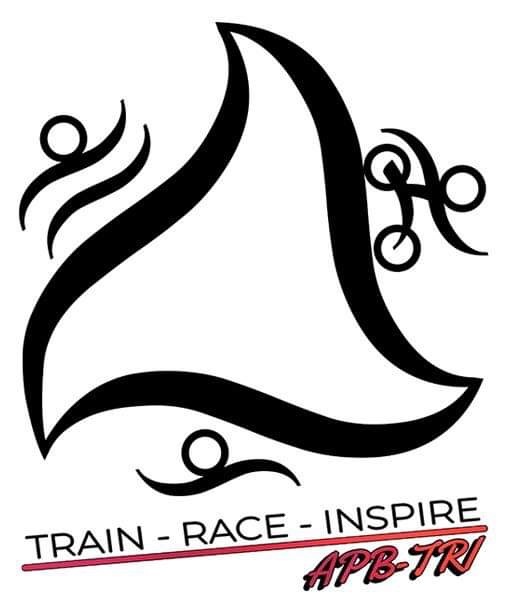During my recent ride, conditions were atrocious and I spent a good amount of time thinking about my bike brakes. To be fair: issues with stopping were probably due to water and mud giving zero resistance, but still, a subject to occupy my mind while pedaling for hours on end.
I am old enough that you stopped my childhood bikes by pedaling backwards. Is it still a thing?
Before you can ponder the optimal brakes type for your new ride, you should probably get a refresher on what to look for when shopping for a new bike and that will limit your decisions.
Factors in choosing type of bike brakes:
- Type of terrain – you will need stronger brakes for downhill rides and on rougher terrain
- Importance of weight – if you are racing on a flat road, you don’t want to be weighed down by piece of equipment with relatively low value
- Aerodynamics – again: choose in a tradeoff between power of the brakes and their impact on speed
Rim brakes
As the name suggests, these stop your bike by exerting pressure on the rim of your wheels, thereby making them slow down and hopefully to a stop when desired. The brake pads can wear out or get wet. Or you can forget to connect them correctly after changing a tire… No, nobody would forget to check that their brakes are working correctly 😉. Sadly, one rim brakes have a serious issue: since the rim can get easily wet or muddy, pads can get wet and surfaces slippery, decreasing effectiveness of the brakes.
Rim brakes were next step in evolution after pedaling backwards and are still quite popular. Here are the main types:
Caliper brakes
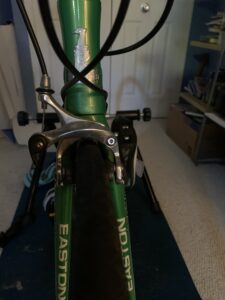
For a long time, these were go-to types of bike brakes. And as you can see in picture above, that’s what my old road bike still has. They are awesome for road bikes! However, they don’t work too well on bikes with wide tires.
There are two types of caliper brakes: single pivot or dual pivot. At the end of the day, they work in pretty much the same fashion: break pads are attached to calipers on each side of the wheel. The calipers are pulled by cables inside of the mechanism and the breaks squeeze the rim, causing the bike to decelerate.
Cons: they can be knocked out of alignment or be too tight or loose, causing breaking to be an issue (in either direction); can get wet or covered in mud, compromising effectiveness. Pros: they are light-weight and very effective.
Cantilever brakes
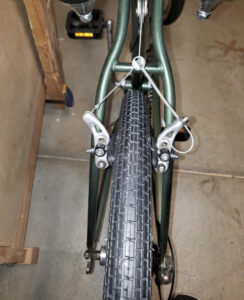
Main difference between cantilever brakes and caliper brakes is that these guys have more wiring – instead of fixed arms, there are two cables connected to one in the middle. These guys are more difficult to install, more expensive and less aero-dynamic, but they provide more power and larger clearance for wider tires.
V brakes
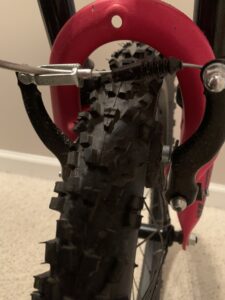
This looks like a cross between caliper and cantilever brakes, doesn’t it?
These guys are actually most powerful of them all and tend to appear on mountain bikes. What looks like a metal part on top is actually a wire covered in protective plastic. If they are so powerful, can you guess what’s their drawback? If you guessed weight, then you were correct!
Disc brakes
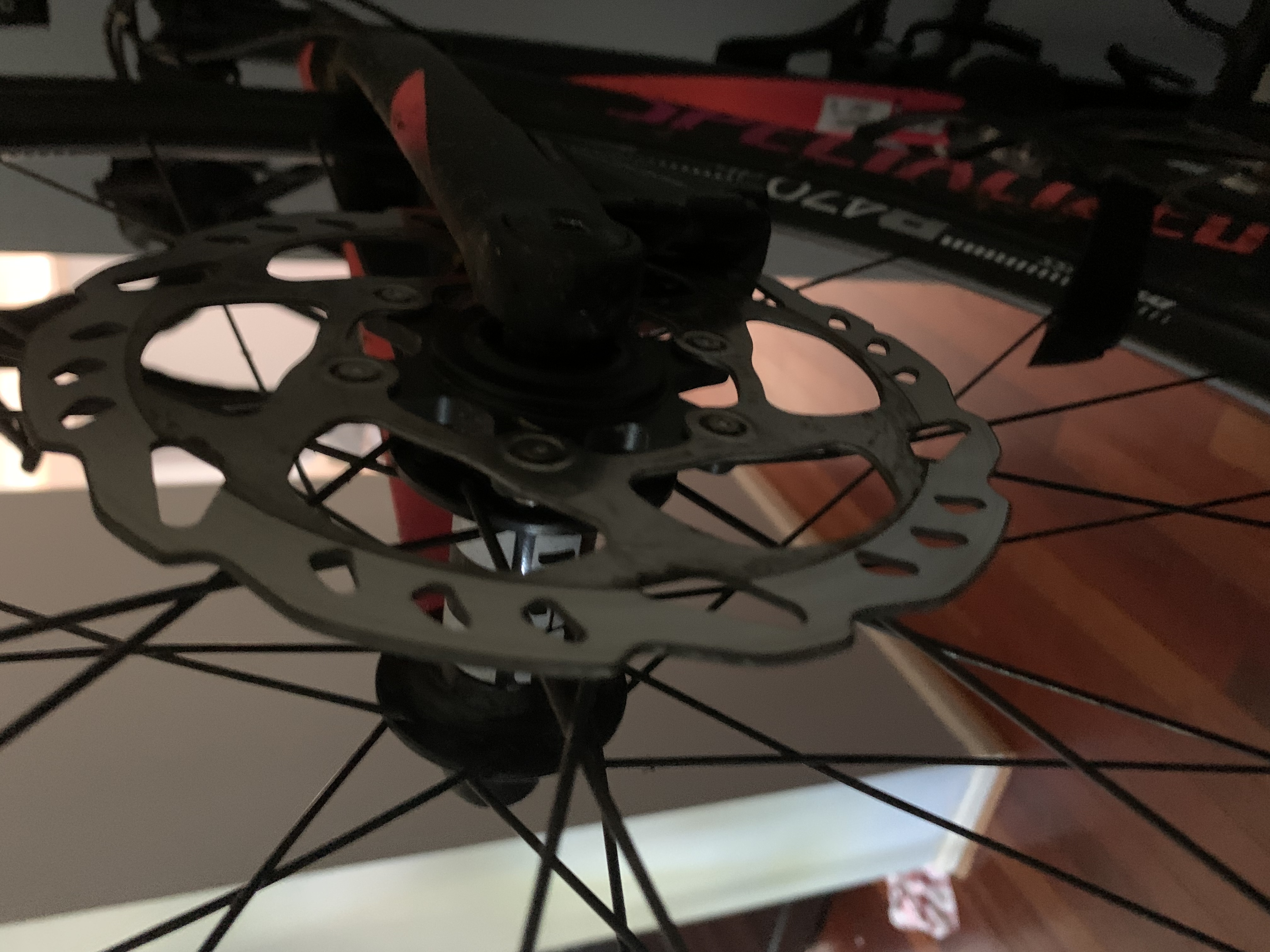
These are currently the fanciest and most effective brakes available!
These powerful mechanisms don’t attach to the rim, but instead to the hub of the wheel. You attach a disc and a caliper mechanism at the center of the wheel. When you push down on the breaks, the brake pads on the caliper clamp down on the disc (hence the name). Be careful – if you’re used to rim brakes, you may come to an abrupt stop. Like the type when you kiss the ground in front of your bike😉. So keep in mind: tons of power! Another advantage? Mud, water and debris rarely makes it that far up the wheel. Oh, and you won’t overheat the rim on a prolonged descent. What, you thought that’s impossible? Clearly, you never rode or drove much across mountains…
By now, you may be asking yourself why don’t all bikes just have disc brakes. Well, at this point, majority of bikes come with disc brakes. But they come at a cost: they are heavy. Fortunately, the world is moving forward and discs are getting lighter, leading to increased popularity.
So which type of brakes do you need on your bike? Funny thing: you may have little choice, as each type tends to require different frame setup. So it’s unlikely you will be selecting brakes separately from the bike. But I hope the above information will help you understand what you are looking for.
Keep at it, my weekend warriors!
